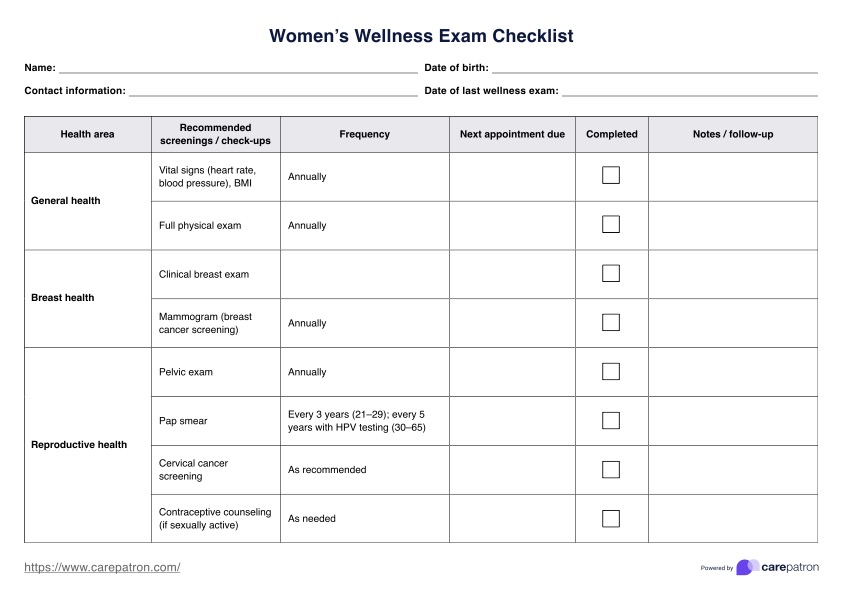The checklist should be used during annual physicals, well-woman visits, or whenever a patient presents for preventive care. Based on clinical recommendations, the frequency column guides how often specific screenings should be performed.

Women's Wellness Exam Checklist
Ensure comprehensive care with our Women's Wellness Exam Checklist for more thorough health evaluations.
Use Template
Women's Wellness Exam Checklist Template
Commonly asked questions
The checklist highlights essential screenings, such as cervical cancer tests and breast cancer evaluations, ensuring timely detection and intervention for potential health issues. It also prompts discussions about lifestyle factors contributing to long-term health outcomes.
Use the checklist’s notes/follow-up section to record and reschedule the missed screening promptly. Maintaining accurate records ensures no critical health checks are overlooked in subsequent visits.
EHR and practice management software
Get started for free
*No credit card required
Free
$0/usd
Unlimited clients
Telehealth
1GB of storage
Client portal text
Automated billing and online payments











